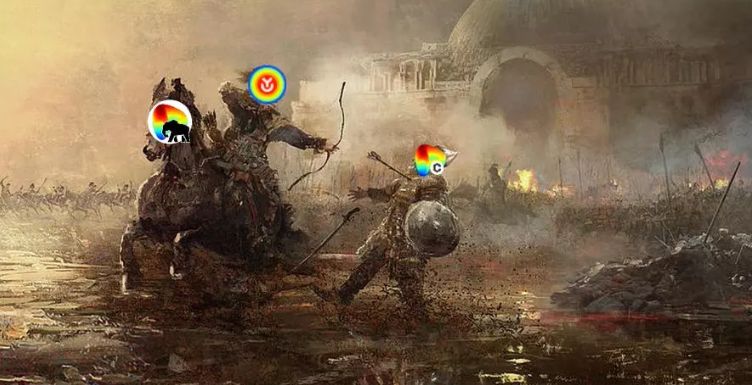Compilation of the original text: Deep Tide TechFlow
Compilation of the original text: Deep Tide TechFlow

Curve Finance's veToken model allows users to lock up $CRV for up to 4 years, earns a management fee (paid in stablecoins), and allows them to vote for CRV allocations from selection pools.
Those protocols seeking liquidity can choose to bribe veCRV holders to funnel CRV allocations to their pools. This is another source of income for veCRV holders in addition to management fees.
But locking up CRV for 4 years is not a very attractive option for holders.
What is the solution?
Choose to wrap your liquidity (Wrap):
cvxCRV from Convex Finance
sdCRV from Stake DAO
yCRV from Yearn
Liquidity wrapping allows CRV holders to receive fees or bribes without locking up for 4 years and provides an opportunity to exit positions.
What is the difference between them?
cvxCRV
By staking cvxCRV, you can earn a fee of 3 crv, plus Convex LP's increased CRV income and a 10% share of CVX tokens.

Bribe revenue (voting rights that can be sold) is distributed to CVX locked for voting.
Therefore, veCRV's normal income (fees + bribes) is split between cvxCRV and CVX.

sdCRV
sdCRV allocates 3 CRV fees and reserves voting power with stakers.
Voting rights can be delegated to StakeDAO, which combines market and OTC bribes for optimal returns.

Or users can directly access bribes on Stake DAO from Paladin or Votium Protocol.

Staking APR is significantly higher since StakeDAO does not split bribes and management fees between sdCRV and native tokens.
Stakers get 3 CRV, CRV and rewards converted into SDT due to bribery.

However, in order to obtain the highest annual interest rate, users must lock the native token SDT.
With veSDT boosted, sdCRV stakers will get a 0.62x boost in voting power, and it can be boosted up to 1.56x based on veSDT balance and total number of veSDT stakers.

yCRV
Among all packages, staking yCRV can obtain the highest returns.
However, the rate of return will drop as there are remaining rewards from the traditional yvBOOST donor contract.
Additionally, 1/4 of all yCRV is owned by the treasury, which increases the yield for all yCRV stakers.

st-yCRV provides a "set and forget" user experience, and the revenue comes from two places:
• management fee:The management fee earned will automatically synthesize more yCRV,
• Bribery:1 st-yCRV = 1 veCRV of voting rights will be sold on the bribe market to further increase the yield.
Unlike sdCRV, holders of st-yCRV relinquish their voting rights, so the protocol cannot use it to vote for Curve.
vl-yCRV has voting rights and is currently in the final stages of development, but it will remove fees and bribes in favor of st-yCRV.
What are the trade-offs in packing these fluids?
agreement fee
Voting rights
protection hook
The agreement fee is charged for the services provided by the agreement (deducted from the displayed APR):
• cvxCRV 0%
• sdCRV 16%
• yCRV 10%
Voting rights:
cvxCRV does not provide voting rights and does not share bribe revenue;
yCRV does not provide voting rights, but shares bribe revenue;
sdCRV provides voting rights and bribe income, but reduces voting rights and bribe income in favor of veSDT stakers.
All protocols direct CRVs to their respective LPs in order to maintain the peg.
When the peg price is below 0.99, Stakedao buys sdCRV with bribe revenue and distributes it to stakers (otherwise they pay with SDT tokens purchased from the market).

What is the best way to play CRV liquid packs?
First off, I must say that I don't own any CRV or its wrappers, I've been bearish on CRV tokens and lifetime cash flow.

Even though about 50% of CRVs are permanently locked, it still lacks the incentive to buy more than CRV emissions.
If all CRV were locked, yields would be severely diluted.

Since the CRV price falls along with the TVL in Curve Finance, so does the bribe value.

However, since the introduction of crvUSD, I see potential in Curve. It can drive more volume and TVL back onto the platform.
But only after the actual deployment will we see how it ends.
In my opinion, yCRV is winning the war of Curve's liquidity packs because it offers the highest yield and the easiest user experience.
If some users own veSDT, they may find the sdCRV solution more attractive, since its votes will boost all users' liquidity lockups at the same time:
sdCRV
sdBAL
sdFXS
sdYFI
sdANGLE
In this case, the absolute loser is cvxCRV. It has the lowest yield, no voting rights or bribe income, weak pegability, etc.
I expect cvxCRV to depreciate further until it equalizes with yCRV yield.
Another problem with Convex is that it's unlikely anyone will mint a new cvxCRV for the foreseeable future - there are 50 million of them on the market"cheap"cvxCRV。

Original link